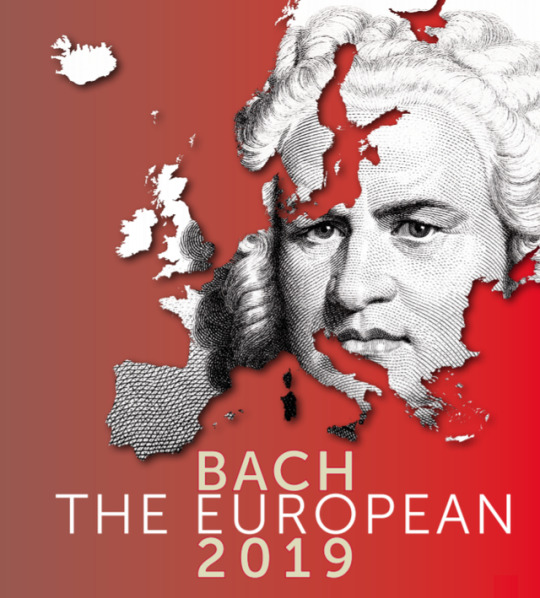#kohncantatas
Explore tagged Tumblr posts
Photo

Programme notes: Bach the European 6 October 2019, John Butt 3 November 2019, John Butt 1 December, Iain Ledingham Bach BWV 227, BWV 225, Schutz Selig sind die Toten SWV 391, Meine Seele erhebt den Herren SWV 494, Scheidt Komm heiliger Geist, Herre Gott SSWV 463, JC Bach Fürchte dich nicht. Bach BWV 78, BWV 572, Delalande De profundis. Buxtehude Win schön leuchtet der Morgenstern BuxWV 223, Das newgebohrne Kindelein, BuxWV 13, Bach BWV 1, BWV 69a. Duke’s Hall, Royal Academy of Music.
#prognotes#writing#research#johnbutt#iainledingham#bach#jcbach#schutz#delalande#buxtehude#ram#cantata#kohncantatas#scheidt
2 notes
·
View notes
Photo

Programme notes: Bach the European 1 November 2020 Bach BWV 42, BWV 552, BWV 135 Royal Academy of Music Baroque Orchestra, directed by Eamonn Dougan. Royal Academy of Music, London.
0 notes
Photo

Programme notes 5 November 2017
JS Bach BWV 234, BWV 105 Directed by Philippe Herreweghe, led by Margaret Faultless Programme notes by Mark Seow Royal Academy of Music
...Belonging to Bach’s first cycle in Leipzig, BWV 105 was first performed on 25 July 1723.The libretto is drawn from the Sunday Gospel describing God’s judgement. Conscience, or Gewissen, is central to this message, and Bach’s music places its depiction at the core of his construction...
3 notes
·
View notes
Photo

Programme notes 2 February 2017
JS Bach BWV 40, BWV 212 Directed by Iain Ledingham, led by Madeleine Easton Programme notes by Mark Seow Royal Academy of Music
...Performed on 30 August 1742, most likely preceding a lavish firework display, BWV 212 was composed to honour Carl Heinrich von Dieskau’s birthday. Picander’s text exhibits traces of an Upper Saxon dialect. However, the evocation of the ‘rustic’ is most clear in Bach’s use of dance. Despite an overall structure that alternates between aria and recitative, the cantata is very much a foray into the world of dance...
#bach#cantata#kohncantatas#madeleineeaston#iainledingham#ram#writing#research#Prognotes#kohnfoundation
1 note
·
View note
Photo

Essay: ‘Things Fall Apart: Humanity in Bach’s Cantatas’ January 2018
Essay commissioned by the Royal Academy of Music and Kohn Foundation to celebrate the tenth and final year of the Bach cantata series.
0 notes
Photo

Programme notes 8 October 2017
JS Bach BWV 181, BWV 17, BWV 196 Directed by Iain Ledingham, led by Margaret Faultless Programme notes by Mark Seow Royal Academy of Music
...With the mention of ‘Belial’ we enter the central contrasting section – or do we? Indeed the musical structure continues as expected, with the reprise of the opening material. However after only four bars into what we believe to be the da capo, the depiction of Belial returns ever the more declamatory. We realise that this is not a da capo structure as we were led to believe, but instead a ritornello movement. In other words, just as Satan deceived Eve with ‘sacred Fruit forbidd’n’, Bach tricks us, his loyal listeners...
0 notes
Photo

Concert 25 June 2017
JS Bach BWV 202, BWV 82 Directed by Iain Ledingham, led by Madeleine Easton. Soloists: Claire Ward, Nicholas Mogg. Programme notes by Mark Seow Royal Academy of Music
... Here a gavotte is used to set the good wishes for the newly-wed couple, but also gestures towards the music that will take place after the cantata has finished. This playful diegesis or musical pun is extremely succinct; but then again, the real wedding party has only just begun...
#bach#writing#Prognotes#kohncantatas#kohnfoundation#cantata#ram#madeleineeaston#iainledingham#research#claireward#nickmogg
0 notes
Photo

Programme notes 7 May 2017
JS Bach BWV 562 Organist: Andrzej Malitowski Programme note by Mark Seow Royal Academy of Music
...During his employment in Weimar, Bach began composing a work. The first 81 bars are a completed fantasia; however, after 27 bars Bach abandoned his plans for a fugue...
0 notes
Photo

Programme notes 5 March 2017
JS Bach BWV 656 Organist: Marko Sever Programme note by Mark Seow Royal Academy of Music
...For the third and final verse, the tessitura is gloriously opened up as the cantus firmus is passed down to the pedal...Bach makes the movement of the cantus firmus from soprano to bass most emphatic. And indeed, this journey of tessitura reflects the Agnus Dei, painting Christ’s descent from heaven, and with it, peace on earth...
0 notes
Photo

Essay: ‘Bach’s Bodies: The Spiritual and Physical in the Cantatas’ by Mark Seow January 2017
Essay commissioned by the Royal Academy of Music and Kohn Foundation to celebrate the ninth year of the Bach cantata series.
0 notes